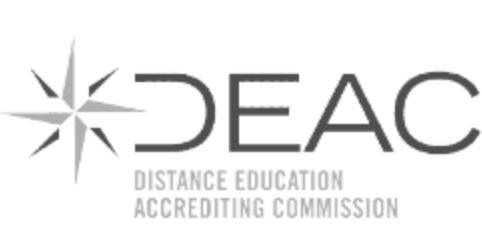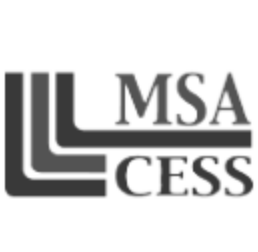Why Adobe Certification is important to hiring managers
As someone who has dealt with graphic designers every day of my working life—and being one myself—I have some real-world, first-hand opinions on the value of Adobe Certifications. If you believe what you read in sales literature, taking a course that teaches you how to use products like Adobe Illustrator or Photoshop can be the difference between getting a job and receiving a polite email saying “no thank you.” But does Adobe Certification really make that big a difference? What does an actual creative director who is hiring designers think of Adobe Certifications for designers?
When a company decides to place an ad for a graphic designer, the Human Resources people and the art director put their heads together to get the job positing just right. They define the role, the necessary amount and type of experience, software expertise needed, and the expectations for and functions of the position. In truth, the way most job descriptions are written, there are only a few professionals with the right mix of characteristics for each job. Nevertheless, the assumption is that there will be dozens—no, hundreds—of applicants. In a recent posting here at Citizens High School, we were looking for a formally trained graphic designer with extensive experience in educational publications, particularly in the areas of admissions and recruitment, and the ability to do web design and video editing would be a plus. In truth, that should have yielded a narrow field of applicants. We had close to three hundred!
How does a hiring manager pick the best candidate?
There are a lot of factors that go into the screening process, but, for designers, it boils down to three major points: portfolio, resume, and training. The first hurdle candidates must clear is the most subjective, but the easiest to judge: the portfolio. Poor quality, lack of variety, too much variety, too few samples, sometimes too many samples, and almost always the wrong kind of work moves the applicant quickly from the general pool to the “thanks for applying” pile. For a designer, the portfolio is like an audition for a singer or dancer. You either have it or you do not. Of course, it’s possible to pad a portfolio with work that’s not necessarily representative of one’s abilities, but that quickly shakes out in a well-crafted interview progression.
Rule of thumb 1: make sure your portfolio is complete, professional, and robust. And don’t apply for a designer job if you are an illustrator or videographer. Should be obvious.
Next comes the resume. It’s really very simple. If the job requires five years of experience in a high-traffic educational setting, a resume with three years in a T-shirt shop is not equivalent. That’s not to say that that job is not valuable or demanding, it is just not what was asked for here. Ten years as a freelancer is not the same as the same time spent agency-side or client-side. Freelance-to-corporate is often a rough transition, but, as a manager, I will not close doors on that basis alone.
Last—but hardly least—comes training. Formal design training is worth a lot in this business. Sure, there are those designers who are self-taught and who are absolutely top-notch…but they are rare. There are two things that good, formal training will provide a designer. First, there is the understanding and application of major design concepts, such as composition, color, typography, how people interact with design (how they read, scan, move across a page, ad, billboard). If it is not there, it is obvious in the portfolio. In our culture, we are exposed to great design all the time, so almost anyone can spot bad design a mile away.
Second is the software skill needed to bring those concepts to the design. And that’s not so easy to spot. In fact, absent a glaring technical error, it’s almost impossible to detect. This is where I like to see proof of formal training. A degree. A diploma. An Adobe Certification in the software specified in the job description.
Rule of thumb 2: Know your software. There are no substitutions allowed. If they want Illustrator and Photoshop, don’t try to sneak in with CorelDraw and Paint. Apples and oranges.
All software is not equal
A dozen or so years ago, one could divide the design industry into Quark Xpress shops and PageMaker shops. The divide fell along unusual lines: Quark was mainly used by ad agencies while PageMaker was used by schools and universities and a considerable number of freelance and casual-ish users. Quark was more popular in the East while PageMaker was big out West. Quark was expensive and hard to learn, but amazingly adaptable in the hands of a skilled designer. Aldus (later Adobe) was smart. They subsidized university purchases of their products and got them in the hands not only of the designers working in schools but also those that were training at those schools. Indoctrination at the educational level worked. There was a similar battle between Aldus (later Adobe) Illustrator and Macromedia Freehand that was less institutionally driven and more about personal preference.
Familiarity with the correct software was extremely important. It still is, but for serious designers the choice is pretty much limited to Adobe products. Today, it’s not so much a question of which software someone uses but how well they know it. For me, it’s a deal breaker if someone doesn’t live and breathe the software that we use in the design field. With very few exceptions (like t-shirt and sign shops, for some reason), that’s Photoshop and Illustrator, with InDesign often in the mix if the shop does larger, multi-page publications. All of this is made by Adobe, the company that is now the sole big dog in the design world.
Why mastery is so important
Graphic design software is among the hardest to use and master of any application. Adobe Photoshop and Illustrator are notoriously complicated. While it’s true that just about anyone can mess around in Photoshop and come up with something that looks okay, and for the most basic image manipulation it’s fairly straightforward. Illustrator, on the other hand, is a completely different matter. Universally known to be one of the most difficult applications of any type to master, Adobe Illustrator’s user base consists of trained, accomplished designers and newbies who are lost. There is not a lot of in-between.
It doesn’t help that there are no real user-friendly alternatives, and the marketplace has eliminated most equivalents. There are still a few diehards in the PC world using CorelDraw, but that’s about it. There are more alternatives on the market to Photoshop, even some solid free ones like the web-based Pixlr that I used to teach high school students basic image editing, but if you’re doing professional work Photoshop is the only real answer.
In word processing, if you regularly use Microsoft Word, you’ll find it switch to Google Docs fairly straightforward. Going from Microsoft Excel to Google Sheets is a breeze. Going the other way, from Google to Microsoft with either program, is more difficult, but still doable. I worked for the better part of a decade in organizations that used Macromedia Freehand instead of Adobe Illustrator. In my opinion, even today, Freehand was a much better program at the time, easier to use, more intuitive, and extremely powerful. Adobe bought Macromedia and Freehand vanished. That left Illustrator as the only option. I had to climb that steep learning curve without the benefit of Adobe Certification. Had there been easy-to-access classes when I made my transition, I would have jumped at the chance!
Training makes the difference

This is why formal training in the graphic design field is so critical. My career began at a point where traditional graphic design techniques were giving way too early Macintosh computers. I had the good fortune—at least I think it’s good fortune—to see my career develop as software evolved, so I am among probably the last generation of designers who learned pen-and-paper layout and paste-up. In fact, it was only in the last few years that I got rid of my drawing table and T-square. It was a painful decision—but I admit I enjoy the newfound open space in my studio!
For those who are not able to transition from Version 1.1 of Photoshop, as I did, to today’s souped-up incarnation, you must learn formally. Certification courses are the way to go. Hands-down, no argument, if you want to do this profession get Adobe Certified!
What formal training gets you…and does not get you
Being certified through Adobe in Photoshop and Illustrator (and InDesign, if you choose) does not automatically make you a designer. It’s not going to make you aesthetically gifted or typographically talented, and it’s not going to give you a better eye or sense of composition and composition. But it will give you mastery of the software. That is absolutely critical to doing this job.

Real-world advantages
If you are lucky—or, perhaps, unlucky—enough to find yourself in a high-volume shop with lots of projects zooming bumper-to-bumper across your desk, your ability to manipulate software quickly and efficiently will be the cornerstone of your success. It is not so much that you will be all-knowing and never have to look up how to do some obscure function. All designers, no matter how experienced, will find themselves mired in Google searching up an answer to a complex or unusual problem in illustrator or Photoshop. It’s really the day-to-day, hour-to-hour job that will be positively affected by Adobe Certification.
There is no right way, but there are some wrong ways
The old saying goes if all you have is a hammer everything looks like a nail. If you know how to do something only one way in Photoshop or Illustrator, then everything you produce will start looking the same. When I teach Photoshop, I am always careful to tell my class that whatever I teach them, whichever technique or shortcuts I show them, that there are probably five or six—or ten—other ways to do the same thing.
That’s the cool thing about these programs. Once you master the basic functions of Adobe Photoshop or Illustrator and then explore the more advanced operations, you still have not learned all the program has to offer, but rather you have formed the building blocks for using it. There are so many ways to do things, and having multiple approaches to any given graphical problem is going to give you a better outcome.
That fluency with the application is what I look for as an art director. I honestly do not need someone who is extremely good at one aspect of Photoshop. I need someone adept at all aspects. It is not being greedy, it is necessity. Graphic design is an extremely demanding, almost always time-sensitive profession. On-the-job training might be possible in some roles, but not in many. My small team at Citizens High School cranks out as much as a large design firm. We work quickly, efficiently, and with high quality. There just is no time to help a junior staffer gain traction. All of us hit the ground running, and we keep on running!
Professionalism is the rule
There is no room for amateurs in this business anymore. A few years ago, I would probably have told a student that to be Adobe Certified would look good on a résumé but was not a dealbreaker. Today, I would say it is a must-have. With hundreds of applicants for every design job or place in a design school, the victory might turn on that Adobe Certification.
It’s never too soon to learn
Fortunately, Citizens High School offers Adobe Certification prep courses. As a high school student, whether traditional age or adult, you can get yourself to the head of the pack by earning certification early and working with the programs to develop the fluency that art directors look for. I am not exaggerating when I say that you can take years off your training by getting Adobe Certification. What you learn in the course would take you five times as long on your own. There are only so many YouTube videos you can watch about knocking out a background or curving type. Sure, you will learn how to do whatever it is you’re trying to do but you will not have a solid base of the fundamentals of the program. It is a little bit like giving someone a fish instead of teaching him how to string a pole, tie on lures, cast, reel in, scale the fish, filet it, cook it. The process is important. Plus, it’s Adobe…it’s not simple!
I can put this into a very personal perspective. When my daughter was a junior in high school, she decided she wanted to pursue graphic design in college. She asked my advice on how to go about preparing for college applications profession in graphic design. My advice was simple: “Get Adobe Certified and make a real-world portfolio.“ She did. She then won an $85,000 design scholarship. Later, in her classes, she designed circles around everyone else because, while they were learning the software, she was already past that and on to making great work.
So, I’m offering the same advice I offered my own kid! Adobe Certification is an indispensable foundation for any career that involves graphic design programs. Get certified and get a leg up on the competition and many steps ahead of the learning curve.
About the author
Richard Williamson is an award-winning graphic designer and art director with more than thirty years’ experience in the field. He is old enough to have used Photoshop V1, which he installed from a floppy disk onto his black-and-white Apple Macintosh Classic II.
 Citizens High School offers a variety of Adobe courses in its IT Academy. Take a look here!
Citizens High School offers a variety of Adobe courses in its IT Academy. Take a look here!

Richard Williamson
Chief Marketing Strategist



 Citizens High School offers a variety of Adobe courses in its IT Academy.
Citizens High School offers a variety of Adobe courses in its IT Academy. 









